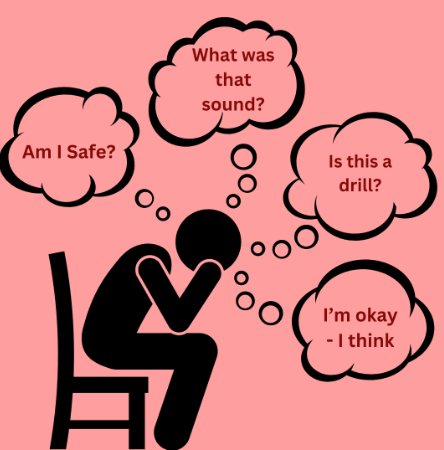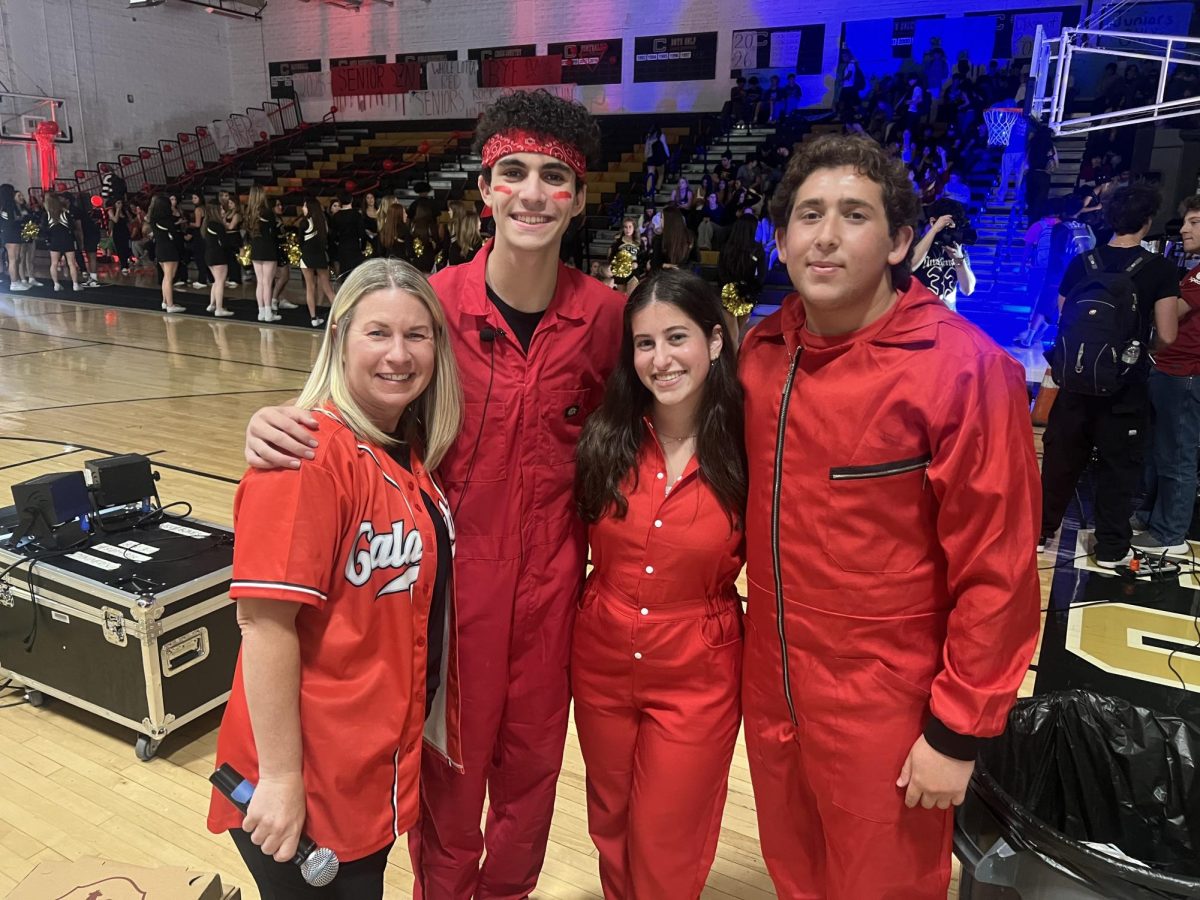EDITOR’S ADVISORY: The following story addresses the topic of active shooter drills in response to school shootings, and their potentially traumatizing effects on students.
A class full of bustling students is suddenly interrupted by an announcement. Through the loudspeaker, the principal orders all students to remain quiet, and all teachers to turn off the lights and lock the doors—the silence suddenly becomes deafening. Hearts begin to race, students begin to cry, and friends hold each other for comfort. Once again, the principal announces over the loudspeaker that this was all a drill and that it is over. While the drill itself is complete, it may have lasting effects on the students who are part of it. School shooting drills are designed to prepare and protect kids, but in many instances, they have also become traumatizing for children and adults.
According to US News, there were 346 school shootings in the U.S. in 2023. As school shootings have risen in the almost 25 years since Columbine, active shooter drills have become a way of life in almost every school in America. Each state has its own criteria for how the drills should be conducted. Unfortunately, school shootings themselves are not the only thing that leaves negative mental effects on adolescents. The drills in place to protect children from such events occurring also take a psychological toll proving to be more effective at instilling fear in children than helping them develop safe behaviors.
Some of this can be attributed to how the drills are presented. Schools face a dilemma as to how to discuss the drills with students.
“[The school] should tell you it’s a drill. It is idiotic not to tell kids,” said Joel Dvoskin, Assistant Clinical Professor of Psychiatry at the University of Arizona via phone interview. “But it’s really important to pretend it’s real.”
What part of these drills is causing so much anxiety? Generally speaking, the drills trigger specific neurological responses in students that can agitate students long after the drill itself.
According to Dvoskin, potentially traumatic situations, even fake ones, effectively flip a switch in a person’s amygdala, the region of the brain that governs their fight or flight reflex. When the amygdala part of the brain is turned on constantly with the same sound or environment, such as active shooter drills and their alarms, a person can develop post-traumatic stress disorder (PTSD).
“When you have significant trauma, certain things happen to your brain, one being the ability to detect a threat is affected,” said Dvoskin.
PTSD desensitizes the brain to a real threat; this can make people react slower in a real school shooting scenario, creating a dangerous environment.
Furthermore, the way different schools go about conducting drills affects the response of students.
Assistant Principal Tyler Lee confirmed that in years prior, CHS lockdown drills looked a lot different. There was no warning that a drill would occur; the administration would announce locations of an “active shooter” to simulate real-life scenarios. After many parental and student complaints, Calabasas changed how they conducted drills.
CHS today starts the process of a drill with an email to let parents and students know what day the drill will take place, according to Lee. The drills provide more information, in hopes of allowing for a calmer procedure.
This process, while largely helpful, can have some unintended psychological consequences.
“Gaining information is helpful, but at the same time, too much knowledge is anxiety-provoking,” said CHS Wellness Counselor Lisa Lucore. “We need to focus on what is in our control.”
Here at CHS, students have differing opinions on these drills. To some, they best prepare students for the worst.
“I think it is very beneficial that we do these lockdown drills,” said junior Megan Falikoff. “I think Calabasas takes great precautions to keep us safe in school, and drills help establish those safe instincts.”
Other students believe school shooting drills don’t pose much help– as many shooters know what students are taught to prepare for.
“I don’t think the drills are beneficial because almost all school shooters have gone to school,” said sophomore Gunnar Goldberg. “They know how these drills work.”
In a 2019 study for the Humanities and Social Sciences Communications Journal, Yla Tausczik and James Pennebaker, two professors at the University of Texas at Austin, found that the brain reads school shooting drills the same as traumatizing events.
“To the students, parents, and teachers, the drills impacted their cognitive mechanisms in a way that traumatizing crises would, instilling fear and confusion,” wrote Tausczik and Pennebaker. .
Tausczik and Pennebaker found that after drills are conducted, subtle disturbances evoke more fear than normal. A simple knock at the door or the sound of a water bottle dropping may cause heart rates to spike. Through the same study at the University of Texas atAustin, teachers and students admit to having a higher fear of an active shooter on campus following the drill.
“I was convinced there was a shooter on campus,” said an anonymous student at a study group Tuasczik and Pennebaker conducted.
With the negative effects of school shooting drills, people have begun to question the effectiveness of such actions. However, Valley-based therapist Lisa Weiner indicated that these drills can be more beneficial than harmful with the right techniques.
“There are certain things you can do to mitigate situations,” said Weiner. “I think schools should have a talk identifying why we have these drills and what they do for us and open it up to discussion: how does this make you feel? Maybe have a therapist sit there and help explain why these drills are important. And tailor it to different grade levels.”
The repetition of drills makes people feel like they control the situation. This control can allow for a less stressful drill experience.
“The more we have something under our belt, a practice, a knowledge of ‘this is what we are going to do,’ is important, that is why I like these drills. If it is done appropriately,” said Weiner.















